 |
| 兩架上下貼身飛行的美軍F-16戰機,正試圖逼近KC-135 空中加油機,進行燃料補給作業。//中央社 |
 |
| 美軍空中加油主力之一的KC-135 Stratotanker加油機與F16戰鬥機 進行空中加油補給情形,圖 (中) 連結兩機之間者為加油管 (boom)。//中央社 |
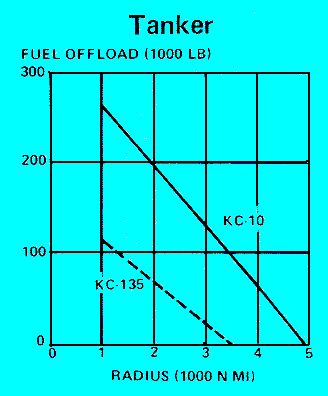 Design fuel capacity is 356,065 pounds (161,508 kg), including a maximum of 238,565 pounds (108,211 kg) in the standad wing tankage and a maximum of 117,500 pounds (53,297 kg) stored in seven fuel cells below the main deck. The KC-10A takes full advantage of the inherent capability of the commercial DC-10, retaining some 88 per cent commonality with the commercial aircraft. KC-10A modifications to the commercial DC-10CF include: elimination of most upper deck windows and lower deck cargo doors; provisions for additional crew; a flexible capability for accommodating additional support people; receptacle for in-flight refueling of the KC-10A itself; military avionics; director lights for the receiver aircraft; supplemental fuselage fuel tanks; modernized aerial refueling operator station; hose reel with drogue for refueling Navy and oher probe-equipped aircraft; advanced aerial refueling boom, and an improved cargo handling system. The KC-10A supplementary fuel tankage system, selected after extensive studies, includes seven unpressurized integral-body fuel cells, four aft of the wing and three forward, all located in underdeck vented cavities. A crashworthy design makes use of keel beams and strategically placed energy absorption material to protect the tanks. Under-fuselage panels permit direct access to each cell for installation, removal, system inspection and maintenance and structural inspection. The KC-10A's boom operator controls refueling operations through a digital fly-by-wire system. Sitting in the rear of the aircraft, the operator can see the receiver aircraft through a wide window. During boom refueling operations, fuel is transferred to the receiver at a maximum rate of 1,100 gallons (4,180 liters) per minute; the hose and drogue refueling maximum rate is 470 gallons (1,786 liters) per minute. The KC-10A can be air-refueled by a KC-135 or another KC-10A to increase its delivery range. The advanced aerial refueling boom designed by McDonnell Douglas offers significant advantages in operational safety, efficiency and fuel-flow rates. It features larger disconnect and control envelopes, independent disconnect capability, an active control system with digital fly-by-wire controls, automatic load alleviation, position rate sensing to assure disconnect within control limits, precision hand controllers with low force requirements and operator-selectable disconnect limits. An additional feature in the KC-10A refueling system is the installation of the hose reel and the capability to change from hose to boom refueling, and vice versa, while in flight. The aerial refueling operator's station in the KC-10A, located aft of the rearward lower fuselage fuel tanks, features improvements in comfort, viewing capability and environment. Instead of assuming the prone position required in current tankers, the refueling operator sits in an aft-facing crew seat. Station equipment includes handy refueling controls, a wide viewing window facing the aft "customer" position and additional periscopic viewing arrangements for traffic management. Accessible from the upper deck, the station is pressurized and has independent thermal control, a quiet environment and an arrangement suited for both training and operational missions. While refueling requires only one operator, two additional seats are provided to accommodate an instructor and an observer. For its cargo-carrying assignments, the KC-10A has a total usable cargo space exceeding 12,000 cubic feet (346 cu m) in its spacious cabin. The cabin has a maximum width of almost 19 feet (5.7 m), ceiling height of 8.5 feet (2.5 m) and a floor area of 2200 square feet (304.25 sq m). In all-cargo configuration, the KC-10A acccommodates 25 standard 88 x 108-inch (223.5 by 274.3 cm) cargo pallets in the cabin with aisles down both sides, or 27 pallets with a single aisle. To facilitate the handling of cargo, the KC-10A is equipped with a versatile system to accommodate a broad spectrum of loads. The system, adapted in part from the commercial DC-10, has been enhanced with the addition of powered rollers, powered winch provisions for assistance in fore and aft movement of cargo, an extended ball mat area to permit loading of larger items, and cargo pallet couplers that allow palletizing of cargo items too large for a single pallet. The features, plus the large 102 by 140-inch (259 by 355 cm) cargo door that swings upward on the left side of the forward fuselage for loading and unloading, give the KC-10A the capability to transport a significant portion of the tactical support equipment of fighter squadrons. Several configurations exist for personnel and crew accommodations. One arrangement is for the crew of five, plus six seats for additional crew and four bunks for crew rest, with an environmental curtain between bunks and the cargo net. The same area also has space for the installation of 14 more seats for support people. In another arrangement, the bunks, environmental curtain and cargo net can be shifted rearward, making room for 55 more support people, along with the necessary utility, lavatory and stowage modules, raising the personnel capacity to a total of 80 crew and support people. Although all eight of the DC-10 upper deck passenger doors are installed as standard, three are deactivated. Normal entry and exit are through the two forward passenger doors on each side, and the aft right-hand door is available as a ground emergency exit for people in the aerial refueling operator's station.
Design fuel capacity is 356,065 pounds (161,508 kg), including a maximum of 238,565 pounds (108,211 kg) in the standad wing tankage and a maximum of 117,500 pounds (53,297 kg) stored in seven fuel cells below the main deck. The KC-10A takes full advantage of the inherent capability of the commercial DC-10, retaining some 88 per cent commonality with the commercial aircraft. KC-10A modifications to the commercial DC-10CF include: elimination of most upper deck windows and lower deck cargo doors; provisions for additional crew; a flexible capability for accommodating additional support people; receptacle for in-flight refueling of the KC-10A itself; military avionics; director lights for the receiver aircraft; supplemental fuselage fuel tanks; modernized aerial refueling operator station; hose reel with drogue for refueling Navy and oher probe-equipped aircraft; advanced aerial refueling boom, and an improved cargo handling system. The KC-10A supplementary fuel tankage system, selected after extensive studies, includes seven unpressurized integral-body fuel cells, four aft of the wing and three forward, all located in underdeck vented cavities. A crashworthy design makes use of keel beams and strategically placed energy absorption material to protect the tanks. Under-fuselage panels permit direct access to each cell for installation, removal, system inspection and maintenance and structural inspection. The KC-10A's boom operator controls refueling operations through a digital fly-by-wire system. Sitting in the rear of the aircraft, the operator can see the receiver aircraft through a wide window. During boom refueling operations, fuel is transferred to the receiver at a maximum rate of 1,100 gallons (4,180 liters) per minute; the hose and drogue refueling maximum rate is 470 gallons (1,786 liters) per minute. The KC-10A can be air-refueled by a KC-135 or another KC-10A to increase its delivery range. The advanced aerial refueling boom designed by McDonnell Douglas offers significant advantages in operational safety, efficiency and fuel-flow rates. It features larger disconnect and control envelopes, independent disconnect capability, an active control system with digital fly-by-wire controls, automatic load alleviation, position rate sensing to assure disconnect within control limits, precision hand controllers with low force requirements and operator-selectable disconnect limits. An additional feature in the KC-10A refueling system is the installation of the hose reel and the capability to change from hose to boom refueling, and vice versa, while in flight. The aerial refueling operator's station in the KC-10A, located aft of the rearward lower fuselage fuel tanks, features improvements in comfort, viewing capability and environment. Instead of assuming the prone position required in current tankers, the refueling operator sits in an aft-facing crew seat. Station equipment includes handy refueling controls, a wide viewing window facing the aft "customer" position and additional periscopic viewing arrangements for traffic management. Accessible from the upper deck, the station is pressurized and has independent thermal control, a quiet environment and an arrangement suited for both training and operational missions. While refueling requires only one operator, two additional seats are provided to accommodate an instructor and an observer. For its cargo-carrying assignments, the KC-10A has a total usable cargo space exceeding 12,000 cubic feet (346 cu m) in its spacious cabin. The cabin has a maximum width of almost 19 feet (5.7 m), ceiling height of 8.5 feet (2.5 m) and a floor area of 2200 square feet (304.25 sq m). In all-cargo configuration, the KC-10A acccommodates 25 standard 88 x 108-inch (223.5 by 274.3 cm) cargo pallets in the cabin with aisles down both sides, or 27 pallets with a single aisle. To facilitate the handling of cargo, the KC-10A is equipped with a versatile system to accommodate a broad spectrum of loads. The system, adapted in part from the commercial DC-10, has been enhanced with the addition of powered rollers, powered winch provisions for assistance in fore and aft movement of cargo, an extended ball mat area to permit loading of larger items, and cargo pallet couplers that allow palletizing of cargo items too large for a single pallet. The features, plus the large 102 by 140-inch (259 by 355 cm) cargo door that swings upward on the left side of the forward fuselage for loading and unloading, give the KC-10A the capability to transport a significant portion of the tactical support equipment of fighter squadrons. Several configurations exist for personnel and crew accommodations. One arrangement is for the crew of five, plus six seats for additional crew and four bunks for crew rest, with an environmental curtain between bunks and the cargo net. The same area also has space for the installation of 14 more seats for support people. In another arrangement, the bunks, environmental curtain and cargo net can be shifted rearward, making room for 55 more support people, along with the necessary utility, lavatory and stowage modules, raising the personnel capacity to a total of 80 crew and support people. Although all eight of the DC-10 upper deck passenger doors are installed as standard, three are deactivated. Normal entry and exit are through the two forward passenger doors on each side, and the aft right-hand door is available as a ground emergency exit for people in the aerial refueling operator's station.
| Specifications | |
| Primary Function: | Aerial refueling/transport. |
| Contractor: | Douglas Aircraft Co. |
| Power Plant: | Three General Electric CF-6-50C2 turbofans |
| Thrust: | 52,500 pounds (23,625 kilograms), each engine |
| Length: | 181 feet, 7 inches (54.4 meters) |
| Height: | 58 feet, 1 inch (17.4 meters) |
| Wingspan: | 165 feet, 4 1/2 inches (50 meters) |
| Speed: | 619 mph (Mach 0.825) |
| Ceiling: | 42,000 feet (12,727 meters) |
| Maximum Takeoff Weight: | 590,000 pounds (265,500 kilograms) |
| Maximum Useable Fuel: | 342,000 Pounds All fuel is usable or transferable via either boom or probe and drogue refueling Fifteen aircraft are modified with two wing-mounted air refueling pods which allow for simultaneous operations with probe equipped aircraft. |
| Range: | 4,400 miles (3,800 nautical miles) with cargo; 11,500 miles (10,000 nautical miles) without cargo |
| Unit Cost: | $86.3 million (1992 dollars) |
| Crew: | Four (aircraft commander, pilot, flight engineer and boom operator) |
| Crew Ratio | 3.5 crews per aircraft 2.0 crews per aircraft (active duty) 1.5 crews per aircraft (associate reserve) |
| Date Deployed: | March 1981 |
| Inventory: | Active force, 59; ANG, 0; Reserve, 0 |
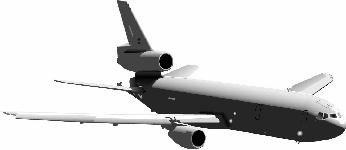
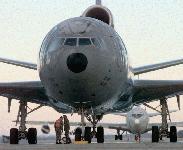
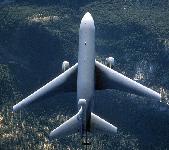
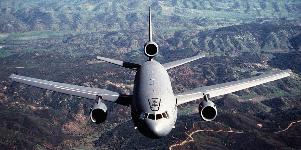
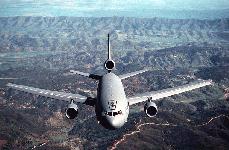
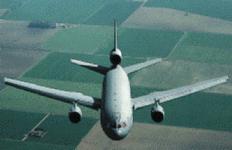

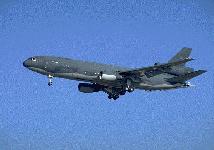
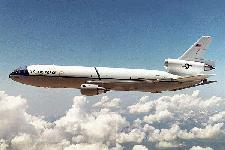

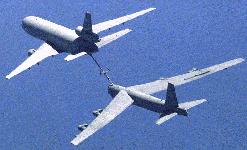
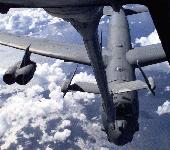



|
|
| 歡迎光臨 鐵之狂傲 (https://gamez.com.tw/) |